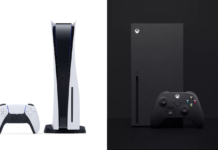Valve’s Half-Life 2 is six years old this month. On its release, it was widely regarded as not only one of the greatest shooters of all time, but one of the best video games period; a beacon of what a game could be. Half-Life 2 transcended the constraints of its genre, elevating beyond a traditional shooting gallery into, one could say, a work of art. Each element of the game is meticulously designed and incorporated for maximum immersion. But six years is a long time, especially in the video game industry, which, like the technology that drives it, is progressing at a staggering rate. In its absence, titles like Modern Warfare and BioShock, for example, have been steadily pushing the first-person shooter into new territory. So how does the game stand up to today’s contenders?
One area in which Half-Life 2 still excels is the visual design. The world of Half-Life 2 is cleverly constructed to seem simultaneously familiar and alien. Buildings and debris are mundane, reminiscent of a present day city. Yet the smallest touches completely transform the effect: the streets are largely deserted; everything shows signs of dereliction. Not to the point of Fallout 3 — this isn’t a post-apocalyptic world, this is a world that just isn’t looked after. The Combine soldiers positioned around the world complete the oppressive atmosphere: their white gas-mask style helmets giving them the appearance of soulless drones. All along the canals of City 17 are abandoned boats in various states of disrepair, bringing with them implications of falling water levels, or increasing water toxicity. Only BioShock has come close to matching Half-Life 2’s visual design in terms of originality and execution, the retro appeal apparent in every inch of the game world, from the weapons to the font that signs are written in, combined with the relentless darkness and recurring water motif, create an incredibly unique world. As imaginative as City 17? Without a doubt.

As important as the visual design and execution are to the final product, they are only part of the whole. Valve have proven time and again that they are masters of storytelling, and Half-Life 2 is certainly no exception. The masterstroke here is to never allow the player to leave the perspective of Gordon Freeman: there are no cutscenes at all. During expositional dialogue, you’re still in first-person perspective and free to roam about as you wish. This mechanic further immerses you in the world of Half-Life, ignoring most games habit of filling up on “cinematic” cutscenes which, while frequently impressive, are largely derivative of films. Many first-person shooters utilise this approach: the Call of Duty games and BioShock for example, as well as games like Prey. However, Half-Life 2 still comes out tops with its carefully written and choreographed conversations, which simultaneously act as exposition, character development, immersion and, simply, breathing time between the action.
The storytelling isn’t the only important factor in the narrative of the game: the pace of the experience is equally paramount. Three hours into Half-Life 2, you’ll still only have access to the first two guns, yet you’ll have spent an impressive amount of time running across rooftops, railways and dodging helicopter gunships in your hovercraft. This demonstrates Valve’s confidence in their game, in that they don’t feel the need to supply the big guns early on to keep the player entertained, they’re comfortable simply with the world they’ve created and the design of the levels. These levels are just as exciting to play through today – the escape from City 17, the assault on Nova Prospekt and the liberation of City 17 (especially the sections against the Striders) are all the kinds of setpieces you could reasonably expect to be the highlight of any lesser game, yet here are the norm.
When you’re not busy gunning down the enemy, you’ll be partaking in the game’s other joy: puzzle-solving. Half-Life 2 isn’t what you’d call a puzzle game, but it features many sections of game design seemingly lost on the newest generation of shooters. Whether you’re using your gravity gun to create a path over sand that it’s in your best interest not to disturb, balancing over precarious drops, carefully timing jumps or simply taking in your surroundings in order to work out how to proceed, Half-Life 2 engages a different part of the brain than other shooters. While new school FPS’ overly emphasize the “shooter,” Half-Life 2 encourages a careful analysis of the environment. The player must truly inhabit Gordon Freeman, to be aware of their place in the game world in order to find their way around. Sections like navigating your way across Ravenholm, or crossing the dilapidated bridge on the way to Nova Prospekt, are part of the old school of first-person game design: the fast paced “shooting gallery” design of Call of Duty has no place for such distractions.

While the newest generation of first-person shooters focus on the shooting, largely due to the increasing popularity of competitive multiplayer, Half-Life 2 represents an older, classier approach to the genre. Not that multiplayer focused shooters are a new phenomenon — take Unreal Tournament or Quake 3 for example — it’s just that Half-Life 2 is the pinnacle of the single-player shooter experience, and the lack of dedication currently given to such things means it’s not likely to be matched any time soon. Elements of exploration and manipulation of the environment to solve puzzles sit comfortably alongside thrilling gunfights and vehicle sections. The story is tantalisingly revealed one morsel at a time, leaving plenty of gaps for the player to fill in themselves, and characters like Alyx Vance have gone down as some of the most beloved in gaming. Games like BioShock, S.T.A.L.K.E.R, and Metro 2033 suggest that there is still life in the single-player experience, but Half-Life 2 remains the benchmark.










